Outline
The International Centre for Water Hazard and Risk Management under the auspices of UNESCO (ICHARM), a research center under the Public Works Research Institute (PWRI), held an international symposium, “ICHARM Quick Reports on Floods 2009,” on 10 December 2009 at the ICHARM Auditorium. This symposium has been held every year to be informed of recent flood disasters worldwide and make use of the information for ICHARM’s activities.
This year’s symposium focused on destructive flood-related disasters that occurred in 2008 and 2009 across the world. ICHARM invited top experts from several countries who are responsible for flood research and management to speak about disaster damage that their countries suffered and lessons and issues they learned from the experience as well as to have discussions with other experts.
The 60-seat auditorium was filled with symposium participants, including researchers of PWRI and the National Institute for Land and Infrastructure Management (NILIM), experts in water-related disasters and 13 master-course students of the ongoing Disaster Management Policy Program organized by ICHARM.
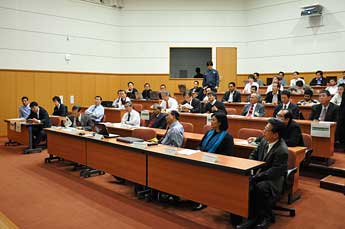
Presentations and Discussion
Prof. Kuniyoshi Takeuchi, director of ICHARM, and Dr. Ryutaro Oishi, executive of PWRI, made opening remarks, followed by five foreign and domestic speakers.
Prof. Liang-Chun Chen, director of the National Science and Technology Center for Disaster Reduction (NCDR), was the first speaker to talk about the flood damage caused by Typhoon Morakot in August 2009 in Taiwan. For instance, that massive sediment outflow reduced the storage capacity of several reservoirs. Prof. Chen also spoke about lessons learned from the event, such as improving rainfall forecasting, strengthening restoration and rehabilitation measures, and promoting better land-use practice.
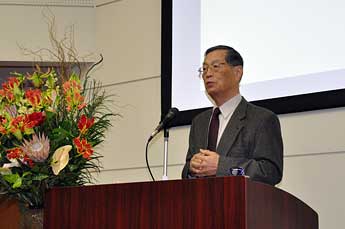
Opening Remarks by Prof. Takeuchi.
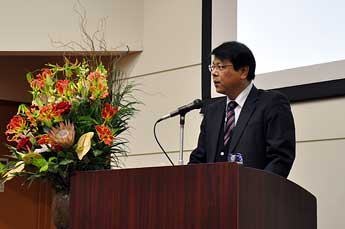
Opening Remarks by Dr. Oishi.
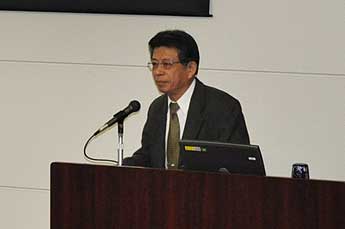
Presentation by Prof. Chen.
Dr. Susan Ramos Espinueva, officer-in-charge of the Hydro-Meteorology Division, Philippine Atmospheric, Geophysical and Astronomical Services Administration (PAGASA), followed Prof. Chen to give a presentation on the flood caused by Typhoon Ketsana in September 2009. She pointed out that the external force itself was very strong, taking for example the 24-hour rainfall as much as that of 500-year return period in some areas. Having said that, she also mentioned that there were more factors which contributed to worsening the damage, listing the insufficient run-off capacity of major rivers, rapid population growth in the vicinity of Manila (with a recent growth ratio of over 2%), and the deforestation in upper river areas. Dr. Espinueva also spoke about possible countermeasures to prevent similar disaster events, referring to the reinforcement of urban flood management (i.e., promoting proper land-use practice and flood forecasting and warning systems) and disaster education.
Dr. Md Abu Taher Khandakar, chief engineer of the Bangladesh Water Development Board (BWDB), gave a presentation on cyclonic floods in Bangladesh between 2007 and 2009. He said that with the national land having low-lying characteristics, Bangladesh is subject to suffer from storm surges. To protect the country from such kind of damage, he told the audience that they need to implement countermeasures such as costal vegetation, shelters and personnel capacity development.
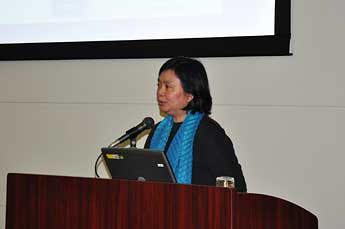
Presentation by Dr. Espinueva.
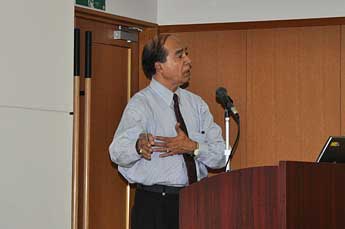
Presentation by Dr. Khandakar.
Dr. Tun Lwin, retired director-general of Myanmar’s Meteorology and Hydrology Department, presented on Cyclone Nargis, which hit the country in May 2008. He attributed the devastating damage caused by the cyclone to the fact that it hit a densely-populated, low-lying area inherently vulnerable to such a hazard. He also added that the area had had little experience with such a hazard and is not equipped with hazard maps or shelters. Dr. Lwin also pointed out an important point, saying “Disaster management is a social science and thus requires collective efforts across all disciplines and organizations.”
Mr. Eiji Otsuki, director for Water Management Coordination of the River Bureau, Ministry of Land, Infrastructure, Transport and Tourism (MLIT), was the final speaker of the symposium and presented on the flood damage in the summer of 2009 in the western part of Japan.
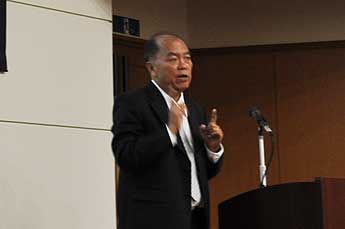
Presentation by Dr. Lwin.
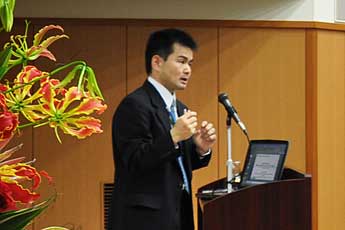
Presentation by Mr. Otsuki.
After the presentations, Director Takeuchi led a panel discussion as the moderator under the theme, “Flood forecasting and warning systems alone are not enough for disaster prevention,” which was brought up by Dr. Tun in his presentation. The participants also actively discussed appropriate measures for flood disaster mitigation under climate change.
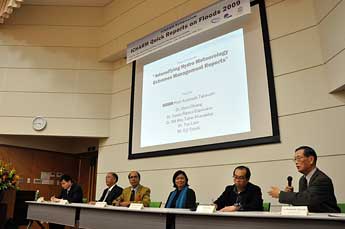
Panel Discussion.
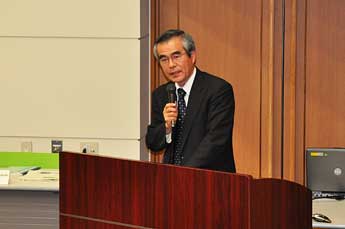
Closing Remarks by Mr. Tanaka.
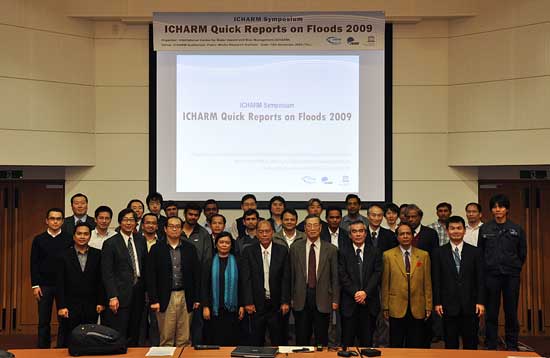
You can download a flier from here.
(There's general information of the symposium.)

